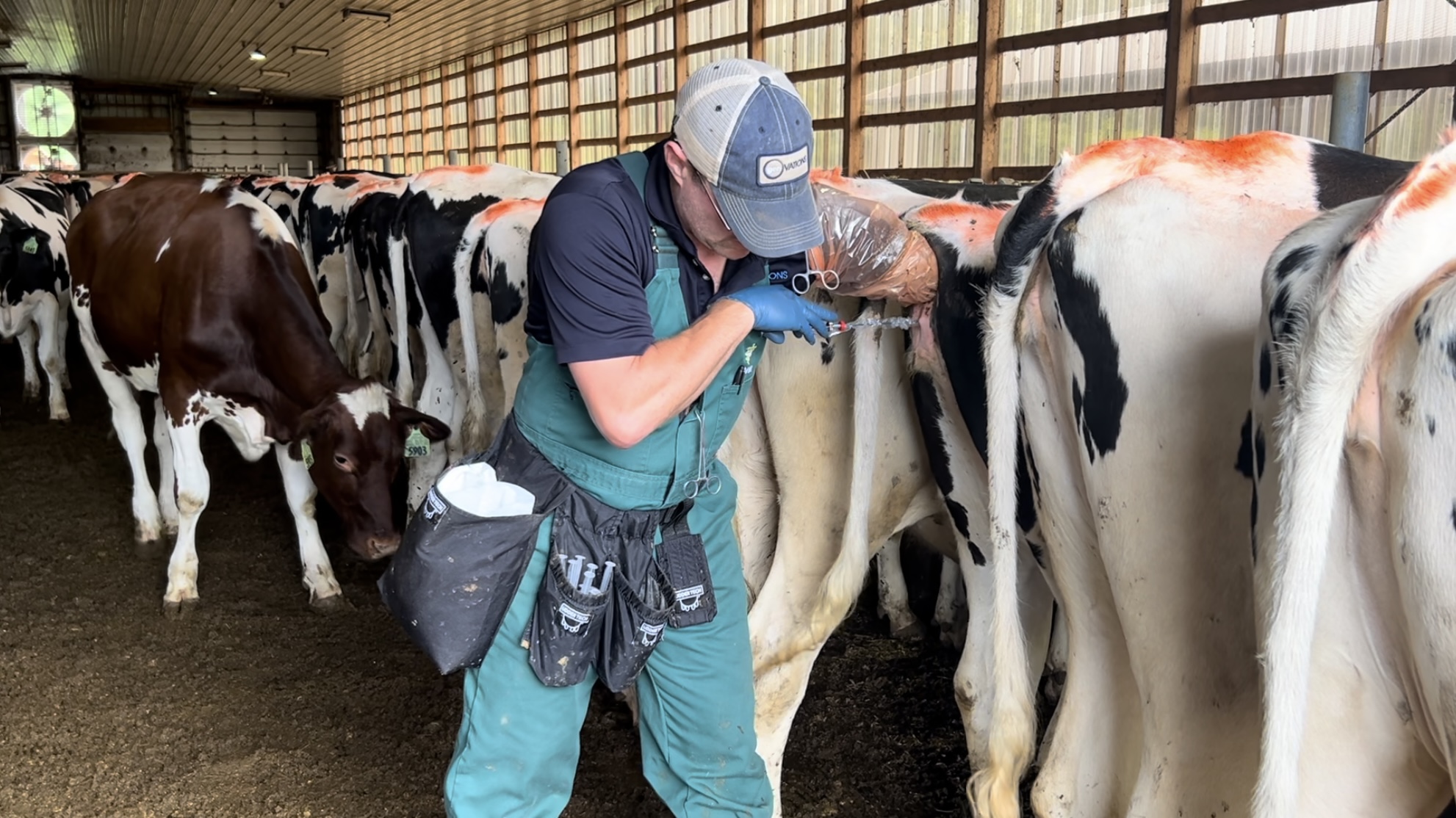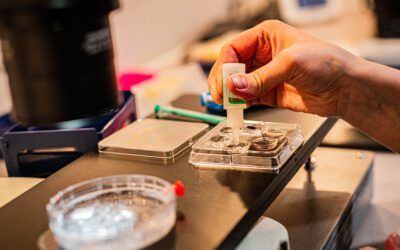When breeding elite cattle, it is easy to focus attention on the donor you are going to flush. Understandably, she’s the individual that has you excited about what you can get from her – embryos to sell, show calves to market, AI bull contracts, outstanding daughters to work with – it doesn’t matter; all attention logically shifts on the donor.
Perhaps one of the most commonly overlooked success factors of any ET program is the recipients. How are they managed? Are you paying as close of attention and taking as much care to prepare them to be the critical influence of donor propagation they are? Often not.
Recipient Selection
Logically every breeder would choose the lesser quality females in the herd to be the potential surrogate mothers of their best donors. But in this case, it is wise to define “quality” based solely on genetic value, and not any other factors. Utilizing genetically inferior but otherwise completely healthy and thriving females as recipients is crucial. Recipients with high cell count, chronic lameness, timid eaters, or chronically sick animals will prevent the fetus from reaching its full potential as it grows in the uterus. Being mindful of the size, age and physical calving ability of the recipient is important. Embryos from mating expected to result in larger calves should never be placed into virgin heifers.
Nutrition
Nutrition is definitely the most easily controlled and often overlooked variable in recipient care which can have dramatic influence on the success of any advanced reproduction program. Dairy producers understand nutrition influences cow health – metabolically and reproductively. Low quality nutrition programs will have a dramatic impact the reproductive performance of recipients, despite the fact that embryo transfer side-steps many fertility and conception related issues. Low corpus luteum quality, cystic ovarian disease, irregular estrus cycles, hostile uterine environment and just general lack of critical nutrients to sustain a healthy pregnancy can all haunt the poorly nourished recipient.
Additionally, there is considerable discussion and historical research that suggest the health and care, specifically the nutritional and disease status of the pregnant cow – or any mother for that matter – will influence the expression of genetics inherited by the unborn fetus. Often referred to as “fetal programming”, the concept can overpower the elite genetics inherited by the embryo, and thus could produce a less desirable calf than any of us hope to achieve through the use of an advanced reproductive program.
Timing of estrus
Heat detection and documentation is crucial for a successful embryo transfer program. Knowing precisely when the recipient was in standing heat – especially relative to the heat of the donor – can help to maximize pregnancy rate by matching up the embryo’s stage of development with the recipient’s days since last heat. Throughout the estrus cycle the hormone profile and the uterine environment changes to accommodate the specific growth and developmental requirements of the embryo. Therefore it is important to try to match the embryo’s developmental stage with the recipient’s appropriately prepared uterine environment. Historically the use of heat detection tools has proven useful for embryo transfer programs, from tail chalking, patches, pedometers, mount detectors, etc. Today the newest technological developments of these automated heat detection systems are helping us more efficiently and accurately than ever before collect heat information. Data captured by these systems can be extremely helpful to the ET practitioner in matching up embryo stages with recipients, and improve not only the overall pregnancy rate but also virtually eliminate the hassle of visual heat detection.
At the time of harvest from the donor, embryos are graded – both for quality, and stage based on an internationally approved grading system. The stage code suggests how mature the embryo appears under the microscope, determined by the trained eye of an embryologist. The lower the stage number, the more likely that embryo would line up with a recipient that was in heat later than the donor. Likewise with higher stage embryos should be ideally transferred into recipients that were in heat earlier than the donor.
Health status of recipient
Any potential recipient that has not been evaluated for health status poses a strong risk to the desired results of an ET program since many of these diseases can be transmitted easily to the fetus in utero, during delivery or through colostrum. Aside from this the often overlooked risks are the threat the disease condition can present to establishing a pregnancy, avoiding early embryonic death and carrying the calf to full term. Depending on your breeding goals and marketing plan some of these diseases are more important than others. For instance Bovine Leucosis Virus may not be important unless you are planning to market bulls to AI. Before the embryo hatches from its shell around day 8 it is completely protected from acquiring infections from the donor. Therefore embryo transfer can actually be an extremely useful tool to completely hault the transmission of disease from a donor to her offspring IF the chosen recipient is free of disease as well. This once again underscores the importance of choosing recipients which are disease free and healthy.
Stress during and after transfer
Even fertile animals can be adversely effected by stress – especially at the time of embryo transfer and the period of uterine implantation occurring 7 to 14 days post transfer. Recipients should be handled and managed with the same, low stress, high-care management practices as your more valuable donor cows would be. After all, you are hoping that she will conceive and deliver the genetically superior calf of that donor – treat her like she has that ability to contribute to your success.
Recipients should be sorted and handled with minimal stress. Try to transfer embryos in the environment and facilities in which they are most familiar and comfortable. Avoid excessive movement and pen changes, so that the recipient can relax and be comfortable, thus increasing the odds that her reproductive tract will not be put at risk from elevated levels of the stress hormone cortisol.
There are so many critical factors in the success – or failure – of embryo transfer. Make sure you give careful consideration to all, and apply care and attention to those you can most positively influence. Good, even excellent recipient selection and management is equally important as how you care for the donor herself. Recipients can have a critical influence on the overall health and future reproductive performance of the valuable calves they are carrying, possibly future embryo donors themselves so be sure not to overlook their important role in any advanced reproductive program.




